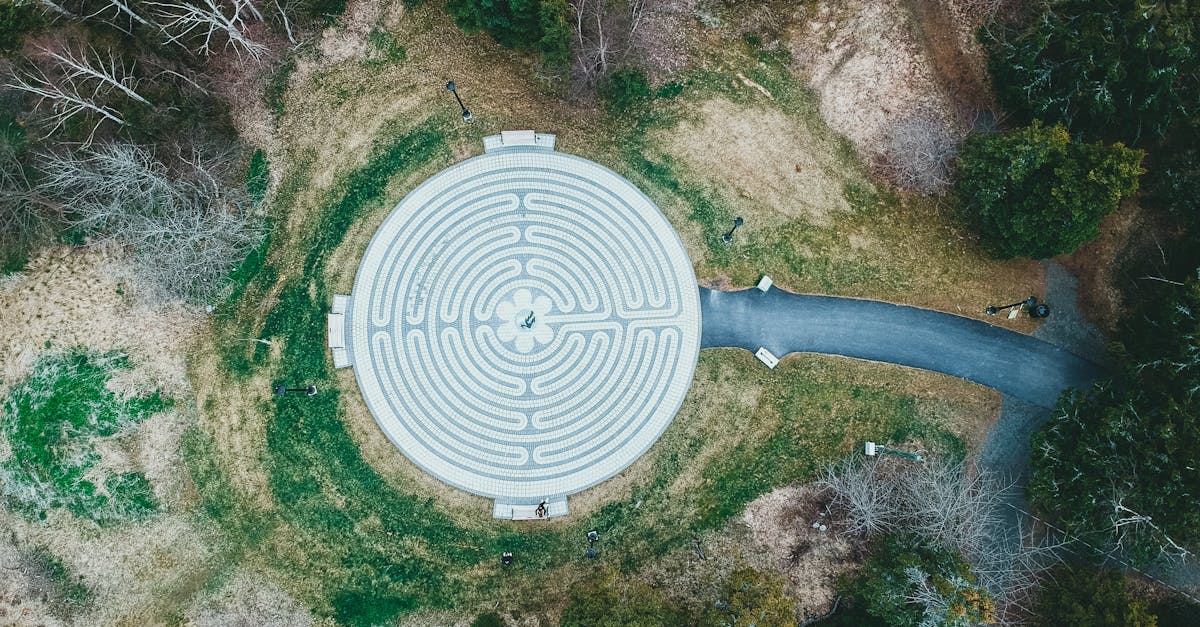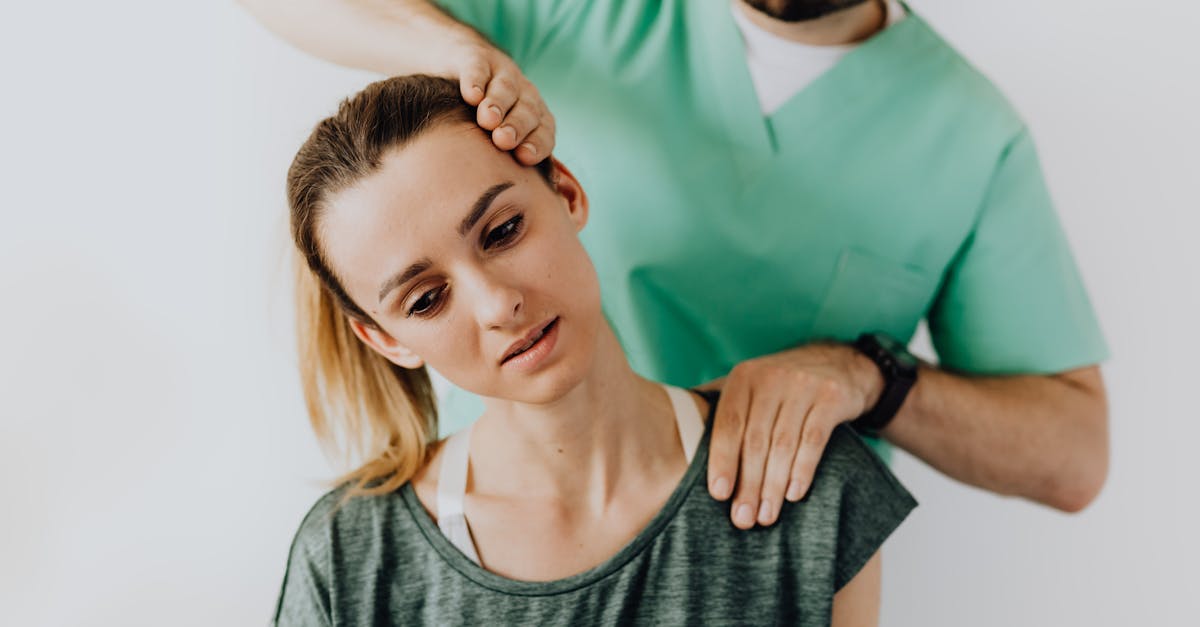|
In Short, labyrinthitis is an inflammatory condition of the inner ear that disrupts balance and hearing, often resulting in debilitating symptoms such as dizziness, vertigo, and significant fatigue. Understanding labyrinthitis is crucial for managing its impact on daily life and enhancing quality of life. The benefits of effective treatment include relief from debilitating symptoms and improved overall functionality. Treatment plans commonly focus on rest, hydration, and medications such as antihistamines to combat inflammation and associated discomfort, ensuring a comprehensive approach to recovery. |
Exploring Labyrinthitis reveals a complex condition linked to inflammation in the inner ear, significantly impacting balance and hearing. Common symptoms include vertigo, dizziness, and debilitating fatigue, often stemming from infections or autoimmune responses. Effective treatment strategies focus on medications to alleviate symptoms, ample rest, and gradual resumption of activities. Understanding labyrinthitis is crucial for individuals seeking to reclaim their health and improve their overall quality of life.

Discover Pulse Align: A Gentle Approach to Well-being
At Pulse Align, we embrace an innovative and non-invasive method that aids in restoring the body’s natural balance and posture through gentle, imperceptible pulses. Our approach focuses on promoting muscle tone symmetry, which can facilitate the body’s natural ability to achieve optimal function and reduce tension in muscles and joints. This holistic method allows you to re-experience your body’s natural movement and harmony.
Recalibration for a Harmonious Lifestyle
We believe in supporting the body’s innate capacity to recalibrate itself, rather than directing effort towards discomfort or specific conditions. This natural process often results in an enhanced sense of comfort and improved posture, allowing clients to engage fully in their daily activities. By participating in the Pulse Align experience, clients have the opportunity to rekindle their connection to their bodies while nurturing overall well-being.
A Tailored Experience for Every Client
Our commitment to personalizing each experience ensures that our clients receive individualized attention and care. Many individuals express how they have noted substantial improvements in tension, postural balance, and their overall sense of wellness after engaging with Pulse Align’s services. Testimonials from clients highlight a renewed sense of vitality, as our gentle techniques work in harmony with their body’s natural processes.
Join Us on a Wellness Journey
We invite you to explore Pulse Align’s services and discover the transformative experiences available at our clinics situated in areas such as La Prairie, Mont-Royal, and Terrebonne. Whether you are seeking to enhance your posture or support your family’s overall wellness journey, Pulse Align is here to help. Remember, our methods work in complement to your existing wellness practices, always encouraging a collaborative approach to your well-being.
Discover Your Path to Wellness with Pulse Align
To learn more about how our gentle, family-friendly techniques can help you restore balance and enhance your well-being, we encourage you to visit our website. Book your consultation today, and embrace the opportunity to cultivate a healthier, more harmonious lifestyle for you and your loved ones.
Medical Disclaimer
The information and advice provided on this site do not replace the advice, diagnosis, or treatment of a healthcare professional. Please note that Pulse Align complements, but does not replace, medical care. Clients should remain under the supervision of their healthcare team for any medical condition. Any symptom relief reported by clients is attributed to the body’s natural ability to restore balance, not to Pulse Align’s direct intervention. For more details, please read our complete Legal Notice.
- Causes of Labyrinthitis: Viral or bacterial infections
- Symptoms: Dizziness, vertigo, hearing loss
- Connection with Fatigue: Chronic fatigue from persistent dizziness
- Diagnosis: Medical history and physical examination
- Treatment: Antihistamines and anti-nausea medications
- Rest and Recovery: Gradual resumption of activities
- Holistic Approaches: Mindfulness and stress-reduction techniques
- Professional Guidance: Consultation with specialized healthcare providers
- Community Support: Engaging with support groups for chronic conditions

Labyrinthitis is an inflammatory condition affecting the inner ear, which can significantly disrupt both balance and hearing. As this condition progresses, individuals often experience debilitating symptoms, including fatigue, dizziness, and sensations of spinning known as vertigo. Understanding the underlying causes, recognizing the symptoms, and exploring effective treatment options are essential steps in overcoming the challenges posed by labyrinthitis and reclaiming a sense of well-being.
Understanding the Causes of Labyrinthitis
Labyrinthitis is primarily triggered by viral or bacterial infections that lead to inflammation within the labyrinth of the inner ear. These infections often result from common conditions such as upper respiratory infections or middle ear infections. In some cases, the presence of other underlying issues, such as autoimmune disorders or allergic reactions, may also play a significant role in the onset of labyrinthitis. Recognizing these causes is vital in determining appropriate treatment strategies and preventive measures.
The Connection Between Labyrinthitis and Fatigue
One of the most common and debilitating symptoms associated with labyrinthitis is extreme fatigue. This fatigue can stem from the body’s constant battle against the sensations of dizziness and disruption in balance. Additionally, the emotional toll of dealing with the unpredictability of labyrinthitis can exacerbate feelings of exhaustion. Therefore, it becomes imperative to address this fatigue holistically, focusing not only on physical but also on emotional well-being.
Recognizing the Key Symptoms
Individuals suffering from labyrinthitis often report a range of symptoms that can vary in intensity. The hallmark symptom is vertigo, characterized by a false sensation of spinning. Alongside this, patients may experience dizziness, hearing loss, nausea, and a pervasive feeling of fatigue. The combination of these symptoms makes daily functioning challenging, emphasizing the importance of early intervention and management strategies.
Medication and Treatment Strategies
Effective treatment for labyrinthitis involves a multi-faceted approach tailored to individual needs. Initial management typically includes adequate rest and hydration to support recovery during acute episodes. Medications such as antihistamines and anti-nausea drugs can help alleviate discomfort and provide relief from symptoms. In cases where infections are present, a course of antibiotics may be necessary. Additionally, addressing underlying stress through relaxation techniques can further assist in managing fatigue.
Integrative Approaches to Recovery
Incorporating holistic practices can play a significant role in promoting recovery from labyrinthitis-related fatigue. Techniques such as mindfulness, yoga, and deep breathing exercises can help stimulate relaxation and reduce stress. Focusing on proper hydration and nutrition can also serve as a foundation for replenishing energy levels. As one navigates this path, collaborating with healthcare professionals who emphasize a holistic approach can provide essential support and tailored strategies for recovery.
The Role of Pulse Align in Restoration
At Pulse Align, a commitment to addressing disorders such as labyrinthitis goes beyond mere symptom relief. Emphasizing the importance of neuromuscular health, our methods promote muscle tone symmetry and facilitate the recalibration of the nervous system. By engaging in gentle, non-invasive techniques, individuals can experience a renewed sense of balance and harmony in their lives, ultimately enhancing their overall well-being.
Understanding labyrinthitis is a crucial step in overcoming its symptoms. By identifying the causes, recognizing the symptoms, and implementing effective treatment strategies, individuals can take control of their health journeys. Embracing a holistic approach, like the principles found at Pulse Align, fosters not only physical healing but also emotional resilience and vitality.
| Aspect | Focus on Wellness |
|---|---|
| Causes | Understanding how environmental factors can disrupt balance supports awareness of wellness. |
| Symptoms | Acknowledging symptoms like fatigue provides insight into body responses needing recalibration. |
| Fatigue Management | Employing relaxation techniques promotes natural energy restoration and enhances overall comfort. |
| Balance Enhancement | Gentle movements and exercises can assist in restoring natural bodily equilibrium. |
| Self-Care Practices | Prioritizing hydration and sleep contributes to improved wellness and overall vitality. |
| Holistic Strategies | Embracing mindfulness approaches fosters mental clarity and physical well-being. |
| Stress Reduction | Integrating stress relief techniques nurtures calmness, promoting balance in daily life. |
| Community Support | Engaging with supportive networks can enhance emotional resilience and shared healing journeys. |
| Nutritional Considerations | Balanced nutrition aids energy levels, guiding individuals towards recovery and vitality. |
| Long-term Wellness | Fostering habits that support overall wellness encourages sustained balance and health. |

Client Testimonials: Empowering Wellness Through Holistic Recovery
“I had been struggling with labyrinthitis for what felt like an eternity. The dizziness and extreme fatigue kept me from enjoying my daily life. After visiting Pulse Align in La Prairie, I can genuinely say I started to feel a remarkable shift. The gentle techniques they use truly support the body’s natural ability to recalibrate and restore balance. I noticed improvements in my well-being after just a few sessions!”
“As someone who has battled labyrinthitis for years, I found solace at Pulse Align in Mont-Royal. Their unique approach to healing focuses on non-invasive methods that respect the body’s own healing process. I felt less dizziness and increased energy levels, which allowed me to reclaim my social life and enjoy family gatherings once more.”
“In Châteauguay, I discovered Pulse Align through a friend’s recommendation. Initially skeptical, I was amazed at how quickly I experienced an easing of my labyrinthitis symptoms. The friendly staff emphasized a holistic approach, which made me feel seen and heard. I can now engage in activities without the overwhelming side effects of fatigue and vertigo.”
“After years of dealing with labyrinthitis-related fatigue, I began my journey at Pulse Align in Terrebonne. I appreciated their focus on helping clients like me naturally enhance our overall wellness. The gradual recovery I have experienced since starting their treatment confirms the power of their method—my body is finally recalibrating!”
“In Sainte-Marie, Pulse Align has become a beacon of hope for many struggling with labyrinthitis. The compassionate team treats you like family, guiding you through each step of your wellness journey. I found their techniques instrumental in reducing my vertigo and fatigue, leading to improved balance and quality of life.”
“Having recently moved to Chicoutimi, I was eager to find wellness resources and stumbled upon Pulse Align. Their commitment to working alongside existing healthcare teams resonated with me. Since beginning treatment, I felt empowered by the supportive atmosphere. Every session encouraged my body’s natural ability to heal.”
For anyone in Deux-Montagnes or Charlesbourg grappling with labyrinthitis symptoms, I unreservedly recommend Pulse Align. We all deserve to feel our best, and they are dedicated to ensuring that families receive the care they need on their wellness journey. To find out how you can benefit from their services, explore Our Clinics and embark on your path to recovery today!
Labyrinthitis is a complex condition characterized by the inflammation of the labyrinth, a vital structure in the inner ear responsible for maintaining balance and hearing. This ailment can significantly disrupt an individual’s quality of life, often leading to debilitating symptoms such as vertigo, dizziness, and extreme fatigue. To effectively manage labyrinthitis, it is crucial to understand its causes, symptoms, and potential treatment options.
The primary cause of labyrinthitis is typically related to infections, which can be viral or bacterial in nature. Often, these infections are secondary to upper respiratory conditions, such as a cold or sinus infection, or may stem from middle ear infections. In some instances, autoimmune disorders or allergic reactions may also contribute to the inflammation within the inner ear. Understanding the underlying cause is essential for determining an effective treatment plan.
Symptoms of labyrinthitis can vary widely among patients, but common manifestations include an intense sensation of spinning, known as vertigo, along with dizziness, hearing loss, nausea, and a pervasive sense of fatigue. The persistent feeling of unsteadiness can leave individuals feeling incapacitated and affects their ability to perform daily activities. In addition, the emotional toll of coping with labyrinthitis can lead to increased anxiety, further exacerbating feelings of fatigue.
Effective treatment for labyrinthitis is typically multifaceted and depends on the severity of the condition. It often begins with a thorough diagnosis conducted by a qualified healthcare professional. Dr. Sylvain Desforges, an expert in osteopathy, naturopathy, and manual medicine, is a notable figure dedicated to addressing chronic conditions, including labyrinthitis. As the founding president of TAGMED clinics and the ACMA association, he emphasizes the importance of evidence-based care and holistic approaches to optimize health and well-being.
Dr. Desforges specializes in managing chronic pain through innovative techniques such as spinal decompression, laser therapy, and shockwave therapy. These advanced modalities are designed to alleviate inflammation and promote recovery in patients experiencing labyrinthitis-related symptoms. By implementing a comprehensive treatment strategy, Dr. Desforges aims to address both the physical and emotional aspects of labyrinthitis, helping patients regain their strength and sense of stability.
Alongside medication, which may include antihistamines or anti-nausea drugs, Dr. Desforges advocates for rest and gradual resumption of normal activities to facilitate recovery. He also underscores the significance of self-care, encouraging patients to avoid bright lights and sudden movements, which can exacerbate symptoms. It is crucial for individuals with labyrinthitis to engage in relaxation techniques, such as mindfulness and deep breathing exercises, to manage anxiety and fatigue effectively.
Through a holistic and individualized approach, healthcare specialists like Dr. Desforges strive to empower patients suffering from labyrinthitis to reclaim their vitality. The combination of cutting-edge treatment technologies and compassionate patient care enables individuals to navigate their recovery journey with assurance and support. Recognizing that fatigue and dizziness often come hand in hand with labyrinthitis, it is essential to approach treatment with a focus on the intricacies of both physical health and emotional resilience.
In summary, understanding labyrinthitis is pivotal for managing its impacts effectively. By staying informed about its causes, symptoms, and treatment options, individuals can take proactive steps toward overcoming the challenges presented by this condition, ultimately fostering a journey toward improved health and quality of life.
Neurovertebral Decompression Technology by TAGMED
Mechanism of Action
The neurovertebral decompression technique offered by TAGMED functions by applying a controlled and progressive traction force on the spine. This approach effectively increases the space between the vertebrae, thus reducing pressure on the intervertebral discs and nerve roots. By creating additional space, this method allows for better circulation of fluids within the targeted area, which is crucial for enhancing healing processes. This dynamic contributes significantly to reducing inflammation and alleviating pain.
Specific Benefits
Utilizing this non-invasive approach provides numerous advantages for relieving chronic pain and associated symptoms related to conditions such as herniated discs, bulging discs, and moderate to severe spinal or foraminal stenosis. By alleviating the pressure exerted on nerve structures and optimizing the fluid circulation around the discs, this treatment not only accelerates recovery but also improves quality of life for a diverse range of patients. The holistic effects of increased mobility and decreased reliance on medications highlight the therapeutic potential of TAGMED’s technology.
Comparison with Other Treatments
When evaluating the TAGMED neurovertebral decompression therapy against other common treatment modalities mentioned in Exploring Labyrinthitis: Insights into Causes, Symptoms, and Effective Treatment for Overcoming Fatigue, distinct differences emerge. Traditional painkillers, corticosteroid injections, surgery, and conventional physiotherapy often involve risks, including potential side effects and prolonged recovery times. In contrast, the neurovertebral decompression technique emphasizes unique benefits such as the absence of invasive interventions, reduced risks associated with pharmacological treatments, and a generally faster recovery time, making it an appealing option for patients seeking effective solutions.
Case Studies and Testimonials
Numerous patients have shared positive experiences regarding TAGMED’s neurovertebral decompression therapy. For instance, individuals have noted significant and lasting reductions in their chronic pain levels, enabling them to resume daily activities more swiftly. Testimonials frequently highlight a decreased dependency on pharmacological treatments, showcasing the profound impact this innovative approach has had on their overall well-being and functionality. These accounts underscore the efficacy of neurovertebral decompression as not just a treatment but a transformative component of managing chronic conditions.
Understanding labyrinthitis is essential for anyone navigating the murky waters of balance and hearing disorders. This inflammation of the inner ear can manifest as debilitating symptoms including vertigo, dizziness, and extreme fatigue. The interplay between these symptoms complicates daily life, making it imperative to recognize and address the underlying causes promptly.
Labyrinthitis is often triggered by viral or bacterial infections, which create a cascade of symptoms adversely affecting the body’s equilibrium. As the inner ear’s labyrinth becomes inflamed, individuals frequently report a significant decrease in their quality of life. The experience of dizziness and vertigo is not merely uncomfortable; it can impair physical function and mental well-being, leading to increased anxiety and exhaustion. Therefore, the connection between labyrinthitis and fatigue cannot be overlooked.
Effective treatment options involve a comprehensive approach focusing on both physical and emotional well-being. It often starts with rest and hydration, reducing physical activities, thus allowing the body to heal. Furthermore, medications such as antihistamines are frequently employed to alleviate symptoms. As patients gradually resume their normal routines, it’s essential to incorporate supportive therapies that address both neuro and muscular systems. Incorporating holistic practices such as mindfulness, relaxation techniques, and community support systems can bolster recovery by mitigating anxiety and promoting emotional balance.
Ultimately, battling labyrinthitis requires an informed and proactive approach. By understanding the underlying mechanisms and symptoms associated with this condition, individuals can collaborate effectively with healthcare professionals. This partnership is vital for developing tailored strategies that address the multifaceted nature of labyrinthitis, particularly in overcoming the pervasive issue of fatigue.

Do you suffer from a chronic condition that responds little or not at all to conservative treatments?
Exploring the complexities of labyrinthitis reveals significant insights into the challenges many face, including discomfort and feelings of imbalance. At Pulse Align, we understand that navigating such experiences can be daunting. Our non-invasive, innovative method utilizes gentle, imperceptible pulses that help restore your body’s natural balance and posture, promoting muscle tone symmetry. By addressing the underlying factors contributing to discomfort, we create a pathway for clients to experience enhanced overall well-being.
It is important to note that Pulse Align does not focus on specific symptoms or conditions directly. Instead, our approach encourages the body to recalibrate itself naturally, leading to impressive improvements in comfort and posture. Our gentle stimulation has the potential to promote relaxation in muscles and joints, facilitating a sense of ease that supports your journey towards well-being.
Our personalized approach at Pulse Align is at the core of our service. Many clients have shared their uplifting testimonials about the notable improvements they’ve experienced in neck and back tension and overall wellness. They report a significant boost in comfort, leading to a renewed sense of vitality. It’s encouraging to hear stories of individuals who, through their engagement with our holistic methods, have rediscovered balance in their lives.
We invite you to explore the Pulse Align website to learn more about our services and find clinic locations that suit your needs, including areas such as La Prairie, Mont-Royal, and Terrebonne. Remember, Pulse Align complements existing healthcare services and works alongside your healthcare team to facilitate a holistic approach to wellness. When you choose to connect with us, you’re taking a step towards enhancing your well-being in a safe, non-invasive, and family-friendly environment.
If you’re ready to start your journey towards improved balance and comfort, we encourage you to visit our website to book a consultation for yourself or your family. At Pulse Align, we celebrate your unique journey and look forward to providing the supportive environment you need to thrive.
To learn more about our services and book an appointment, visit our website: Pulse Align.
Frequently Asked Questions
Vértigo
Les femmes enceintes sont-elles plus sujettes aux vertiges ?
Oui, les changements hormonaux, la tension artérielle et la circulation sanguine peuvent causer des étourdissements ou des vertiges légers.
¿La diabetes puede causar vértigos?
La hipoglucemia puede causar mareos, pero no es un verdadero vértigo.
Un problème de cervicales peut-il donner des vertiges ?
Une raideur ou une arthrose cervicale peuvent contribuer à une sensation d’instabilité, bien que le lien direct soit débattu.
Les transports peuvent-ils déclencher des vertiges ?
Le mal des transports est un trouble de l’équilibre causé par des signaux sensoriels contradictoires, pouvant provoquer vertiges et nausées.
Do coffee or alcohol worsen vertigo?
Excessive alcohol or caffeine may worsen vertigo symptoms in sensitive individuals.
Can vertigo be prevented?
Avoid abrupt position changes, stay hydrated, treat auditory issues, and manage blood pressure to help prevent vertigo.
¿Las mujeres embarazadas son más propensas a vértigos?
Sí, los cambios hormonales, la presión arterial y la circulación sanguínea pueden causar mareos o vértigos leves.
Does getting up too fast cause vertigo?
Standing quickly can cause orthostatic hypotension and dizziness, though not always true vertigo.
Is sudden hearing loss with vertigo serious?
It may indicate inner ear issues like Meniere’s or labyrinthitis. Consult a doctor.
¿La fatiga contribuye a los vértigos?
Sí, la fatiga y la falta de sueño pueden aumentar la sensibilidad a los mareos.



